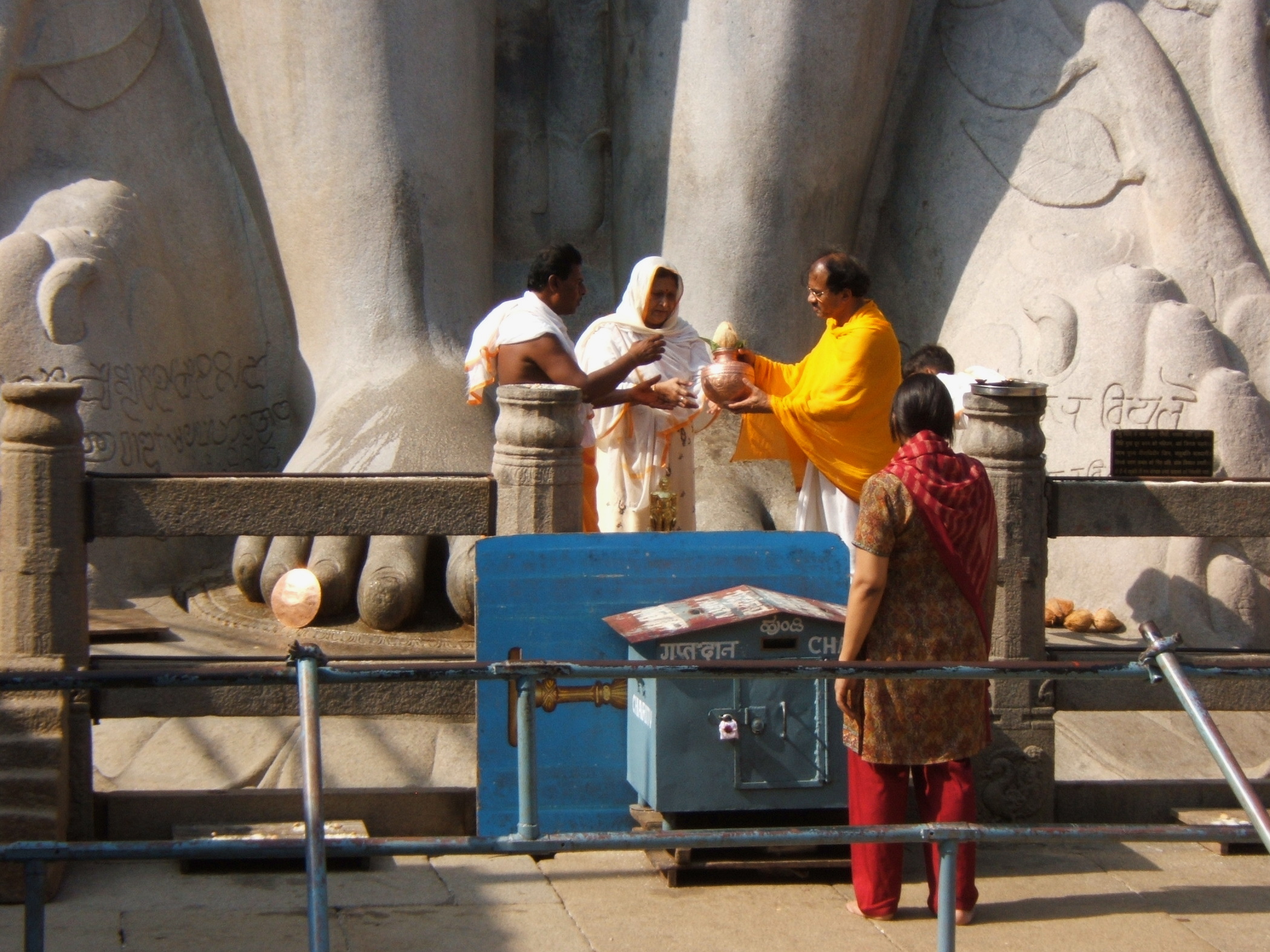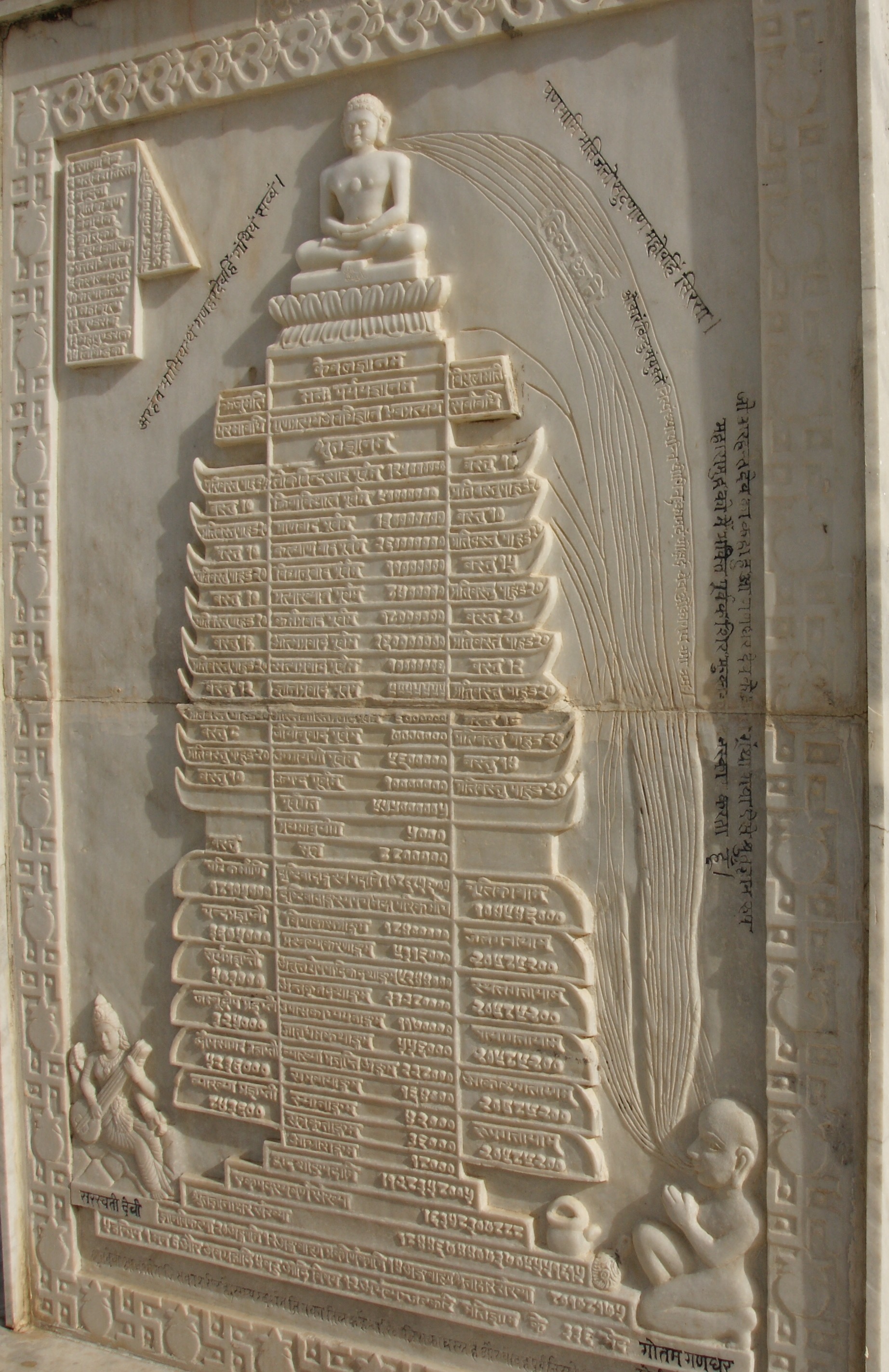|
Puruşārthasiddhyupāya
Puruşārthasiddhyupāya (Purushartha Siddhyupaya) is a major Jain text authored by Acharya Amritchandra. Acharya Amritchandra was a Digambara Acharya who lived in the tenth century (Vikram Samvat). ''Puruşārthasiddhyupāya'' deals with the conduct of householder ('' sravak'') in detail. Another major Jain text that deals with householder's conduct is Ratnakaranda śrāvakācāra. ''Puruşārthasiddhyupāya'' also deals extensively with the Jain concept of ahiṃsā. Content Like all Jain texts first ''sloka'' (aphorism) of ''Puruşārthasiddhyupāya'' is an invocation: Ahimsa Puruşārthasiddhyupāya deals extensively with the Jaina concept of ahimsa (non-injury) particularly in reference to its observance as a minor vow (''anuvrata'') by the ''Śrāvaka''. In "Verse 43" deliberate himsa (injury) is defined as “acting under the influence of passions, an injury caused to physical or psychical vitalities” (verse 43). Acharya Amritchandra then elaborates on the observan ... [...More Info...] [...Related Items...] OR: [Wikipedia] [Google] [Baidu] |
Ahimsa In Jainism
''Ahimsā'' (', alternatively spelled 'ahinsā', Sanskrit: अहिंसा IAST: ', Pāli: ') in Jainism is a fundamental principle forming the cornerstone of its ethics and doctrine. The term ''ahinsa'' means nonviolence, non-injury and absence of desire to harm any life forms. Vegetarianism and other nonviolent practices and rituals of Jains flow from the principle of ahimsa. There are five specific transgressions of Ahinsa principle in Jain scriptures - Binding of animals, beating, mutilating limbs, overloading, withholding food and drink. Any other interpretation is subject to individual choices and not authorized by scriptures. The Jain concept of ''ahimsa'' is very different from the concept of nonviolence found in other philosophies. Violence is usually associated with causing harm to others. But according to the Jain philosophy, violence refers primarily to injuring one's own self – behaviour which inhibits the soul's own ability to attain ''moksha'' (liberatio ... [...More Info...] [...Related Items...] OR: [Wikipedia] [Google] [Baidu] |
Śrāvaka (Jainism)
In Jainism, the word Śrāvaka or Sāvaga (from Jain Prakrit) is used to refer the Jain laity (householder). The word ''śrāvaka'' has its roots in the word ''śrāvana'', i.e. the one who listens (the discourses of the saints). The ''tirthankara'' restores or organises the ''sangha'', a fourfold order of ''muni'' (male monastics), ''aryika'' (female monastics), '' śrāvaka''s (male followers) and ''śrāvikā''s (female followers). In Jainism, there are two kinds of votaries: *The householder (one with minor vows) *The homeless ascetic (one with major vows) According to the Jain text ''Puruşārthasiddhyupāya'': Ratnakaranda śrāvakācāra, a major Jain text, discusses the conduct of a Śrāvaka in detail. Six essentials In Jainism, six essential duties (''avashyakas'') are prescribed for a ''śrāvaka''. These help the laity in achieving the principle of ahimsa which is necessary for his/her spiritual upliftment. The six duties are: #Worship of Pañca-Parameṣṭhi ... [...More Info...] [...Related Items...] OR: [Wikipedia] [Google] [Baidu] |
Amritchandra
Amritchandra (f. 10th-century CE) was a Digambara Jain Acharya who wrote commentaries on Samayasāra called ''Atmakhyati'' and ''Samaysar Kalasha'', Pravachanasara and Pancastikayasara. He also wrote independent books of Puruşārthasiddhyupāya and Tattvartha Sara. He wrote in Sanskrit Sanskrit (; attributively , ; nominally , , ) is a classical language belonging to the Indo-Aryan branch of the Indo-European languages. It arose in South Asia after its predecessor languages had diffused there from the northwest in the late ... language. References Citations Sources * * 10th-century Indian writers Sanskrit scholars Jain acharyas Year of death unknown {{jainism-stub ... [...More Info...] [...Related Items...] OR: [Wikipedia] [Google] [Baidu] |
Jainism
Jainism ( ), also known as Jain Dharma, is an Indian religions, Indian religion. Jainism traces its spiritual ideas and history through the succession of twenty-four tirthankaras (supreme preachers of ''Dharma''), with the first in the current time cycle being Rishabhadeva, whom the tradition holds to have lived millions of years ago, the twenty-third ''tirthankara'' Parshvanatha, whom historians date to the 9th century BCE, and the twenty-fourth ''tirthankara'' Mahāvīra, Mahavira, around 600 BCE. Jainism is considered to be an eternal ''dharma'' with the ''tirthankaras'' guiding every time cycle of the Jain cosmology, cosmology. The three main pillars of Jainism are ''Ahimsa in Jainism, ahiṃsā'' (non-violence), ''anekāntavāda'' (non-absolutism), and ''aparigraha'' (asceticism). Jain monks, after positioning themselves in the sublime state of soul consciousness, take five main vows: ''ahiṃsā'' (non-violence), ''satya'' (truth), ''Achourya, asteya'' (not stealing), ''b ... [...More Info...] [...Related Items...] OR: [Wikipedia] [Google] [Baidu] |
Jain Text
Jain literature (Sanskrit: जैन साहित्य) refers to the literature of the Jain religion. It is a vast and ancient literary tradition, which was initially transmitted orally. The oldest surviving material is contained in the canonical ''Jain Agamas,'' which are written in Ardhamagadhi, a Prakrit ( Middle-Indo Aryan) language. Various commentaries were written on these canonical texts by later Jain monks. Later works were also written in other languages, like Sanskrit and Maharashtri Prakrit. Jain literature is primarily divided between the canons of the ''Digambara'' and ''Śvētāmbara'' orders. These two main sects of Jainism do not always agree on which texts should be considered authoritative. More recent Jain literature has also been written in other languages, like Marathi, Tamil, Rajasthani, Dhundari, Marwari, Hindi, Gujarati, Kannada, Malayalam and more recently in English. Beliefs The Jain tradition believes that their religion is eternal, and the ... [...More Info...] [...Related Items...] OR: [Wikipedia] [Google] [Baidu] |
Digambara Acharya
Digambara Sādhu (also ''muni'', ''sādhu'') is a Sādhu in the Digambar tradition of Jainism, and as such an occupant of the highest limb of the four-fold ''sangha''. They are also called ''Nirgranth'' which means "one without any bonds". Digambar Sādhus have 28 primary attributes which includes observance of the five supreme vows of ''ahimsa'' (non-injury), truth, non-thieving, celibacy and non-possession. A Digambar Sādhu is allowed to keep only a feather whisk, a water gourd and scripture with him. In Jainism, those '' śrāvakas'' (householders) who wish to attain ''moksha'' (liberation) renounce all possessions and become an ascetic. According to the Jain text, ''Dravyasamgraha'': Digambar Sādhus are also called ''nirgranth'' which means "one without any bonds". The term originally applied to those of them who were on the point of attaining to omniscience, on the attainment of which they were called ''munis''. Rishabhanath (the first '' Tirthankar'') is said to ... [...More Info...] [...Related Items...] OR: [Wikipedia] [Google] [Baidu] |
Vikram Samvat
Vikram Samvat (IAST: ''Vikrama Samvat''; abbreviated VS) or Bikram Sambat B.S. and also known as the Vikrami calendar, is a Hindu calendar historically used in the Indian subcontinent. Vikram Samvat is generally 57 years ahead of Gregorian Calendar, except during January to April, when it is ahead by 56 years. Alongside Nepal Sambat, it is one of the two official calendars used in Nepal. In India, it is used in several states. The traditional Vikram Samvat calendar, as used in India, uses lunar months and solar sidereal years. The Nepali Bikram Sambat introduced in 1901 CE, also uses a solar sidereal year. History A number of ancient and medieval inscriptions used the Vikram Samvat. Although it was reportedly named after the legendary king Vikramaditya, the term "Vikrama Samvat" does not appear in the historical record before the 9th century; the same calendar system is found with other names, such as Krita and Malava. In colonial scholarship, the era was believed to be bas ... [...More Info...] [...Related Items...] OR: [Wikipedia] [Google] [Baidu] |
Ratnakaranda śrāvakācāra
Ratnakaranda śrāvakācāra is a Jain text composed by Aacharya Samantbhadra Swamy (second century CE), an ''acharya'' of the Digambara sect of Jainism. Aacharya Samantbhadra Swamy was originally from Kanchipuram, Tamil Nadu. Ratnakaranda śrāvakācāra is the earliest and one of the best-known śrāvakācāra. A śrāvakācāra discusses the conduct of a Śrāvaka or Jain lay practitioner. Hiralal Shastri mentions 29 such texts from 2nd century CE to modern times.Shravakachara Samgraha, Part 4, Pages Ka-Kha, Hiralal Shastri, Jivaraj Jain Granthmala, 1998 Overview First verse of the ''Ratnakaranda śrāvakācāra'' is dedicated to Vardhamāna Mahāvīra, the 24th Tirthankara: :Namāh śri Vardhamāna-e nirdhutakalilātmane :Sālokānāma trilokānāma yadā-vidyā darpanāyate! (1-1) Tr.- I bow to Śri Vardhamāna Mahāvīra who has washed off llthe impurities of karmic filth from His Soul, ndIn Whose Perception scintillate the three Worlds and the infinity of Spa ... [...More Info...] [...Related Items...] OR: [Wikipedia] [Google] [Baidu] |
Aphorism
An aphorism (from Greek ἀφορισμός: ''aphorismos'', denoting 'delimitation', 'distinction', and 'definition') is a concise, terse, laconic, or memorable expression of a general truth or principle. Aphorisms are often handed down by tradition from generation to generation. The concept is generally distinct from those of an adage, brocard, chiasmus, epigram, maxim (legal or philosophical), principle, proverb, and saying; although some of these concepts may be construed as types of aphorism. Often, aphorisms are distinguished from other short sayings by the need for interpretation to make sense of them. In ''A Theory of the Aphorism'', Andrew Hui defined an aphorism as "a short saying that requires interpretation." History The word was first used in the '' Aphorisms'' of Hippocrates, a long series of propositions concerning the symptoms and diagnosis of disease and the art of healing and medicine. The often cited first sentence of this work is: "" - "life is shor ... [...More Info...] [...Related Items...] OR: [Wikipedia] [Google] [Baidu] |
Tattvartha Sutra
''Tattvārthasūtra'', meaning "On the Nature [''artha''] of Reality [''tattva'']" (also known as ''Tattvarth-adhigama-sutra'' or ''Moksha-shastra'') is an ancient Jain text written by ''Acharya (Jainism), Acharya'' Umaswami in Sanskrit, sometime between the 2nd- and 5th-century CE. The ''Tattvārthasūtra'' is regarded as one of the earliest, most authoritative texts in Jainism. It is accepted as authoritative in both its major sub-traditions – ''Digambara'' and ''Śvētāmbara'' – as well as the minor sub-traditions. It is a philosophical text, and its importance in Jainism is comparable with that of the ''Brahma Sutras'' and ''Yoga Sutras of Patanjali'' in Hinduism. In an aphoristic sutra style of ancient Indian texts, it presents the complete Jainism philosophy in 350 sutras over 10 chapters. The text has attracted numerous commentaries, translations and interpretations since the 5th-century. One of its sutras, ''Parasparopagraho Jivanam'' is the motto of Jainism. Its ... [...More Info...] [...Related Items...] OR: [Wikipedia] [Google] [Baidu] |





